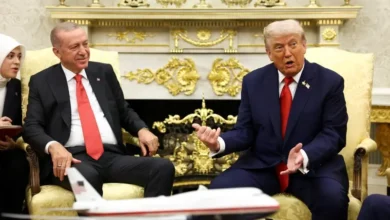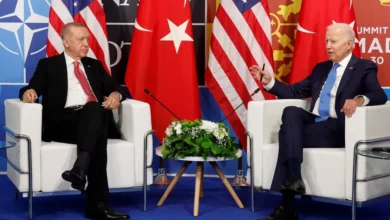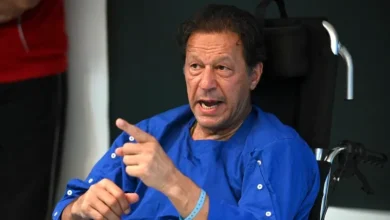Britain unveils radical defense overhaul to meet new threats

Britain said on Monday it would radically change its approach to defense to address threats from Russia, nuclear risks and cyber-attacks by investing in drones and digital warfare rather than relying on a much larger army to engage in modern combat.
Responding to US President Donald Trump’s insistence that Europe take more responsibility for its own security, Prime Minister Keir Starmer has pledged the largest sustained increase to UK defense spending since the end of the Cold War.
But with limited finances, the government’s plan envisages making the army more lethal, not larger, by learning from Ukraine where drones and technology have transformed the battlefield.
Defense Secretary John Healey said Britain’s adversaries were working more in alliance and technology was changing how war was fought: “Drones now kill more people than traditional artillery in the war in Ukraine and whoever gets new technology into the hands of their armed forces the quickest will win.”
Starmer commissioned a Strategic Defense Review shortly after he was elected last July, tasking experts including the former NATO boss, George Robertson, and a former Russia adviser to the White House, Fiona Hill, with formulating a plan for the next 10 years.
Despite cuts to the military budget in recent years, Britain still ranks alongside France as one of Europe’s leading military powers, with its army helping to protect NATO’s eastern flank and its navy maintaining a presence in the Indo-Pacific.
But the army, with 70,860 full-time trained soldiers, is the smallest since the Napoleonic era and the government has said it needs to be reformed given the growing strategic threats.
New defense age
Under the plan accepted by the government, Britain will expand its fleet of attack submarines which are nuclear-powered but carry conventional weapons, and will spend 15 billion pounds ($20.3 billion) before the next election due in 2029 on the replacement of the nuclear warheads for its main nuclear fleet.
It will build at least six new munitions plants, procure up to 7,000 British-made long-range weapons, and launch new communication systems for the battlefield.
A Cyber and Electromagnetic Command will lead defensive and offensive cyber capabilities, after UK military networks faced more than 90,000 “sub-threshold” attacks in the last two years.
But on the size of the armed forces, the review said it would not reduce numbers, even as a greater emphasis is put on technology, but increasing the total number of regular personnel should be prioritized when funding allows, likely after 2029.
“The moment has arrived to transform how we defend ourselves,” Starmer told workers at BAE Systems’ Govan shipbuilding site in Scotland, saying he would “end the hollowing out of our armed forces.”
“When we are being directly threatened by states with advanced military forces, the most effective way to deter them is to be ready.”
Starmer has already said defense spending will increase to 2.5 percent of GDP by 2027, from 2.3 percent, but critics and political opponents urged the government to put a date on when it would move to 3 percent of GDP.
Reuters has previously reported that NATO Secretary General Mark Rutte wants members to raise defense spending to 3.5 percent of their GDP, and a further 1.5 percent on broader security-related items to meet Trump’s demand for a 5 percent target.
Starmer said he was “100 percent confident” that UK defense spending would hit 3 percent in the next parliament likely between 2029-2034 – something the review appeared to take into account when drafting its recommendations.
The government described its policy as “NATO first,” drawing on the strength of the alliance’s members which meant it would never fight alone.
Starmer has sought to cast the higher defense spending as a way to create jobs and wealth, as he juggles severely strained public finances, a slow-growing economy and declining popularity among an increasingly dissatisfied electorate.
The announcement about new submarines helped lift the share prices of defense groups Babcock, BAE and Rolls Royce.









